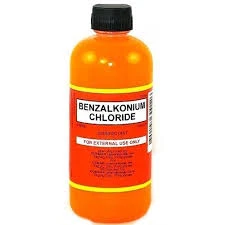Understanding Poly Aluminium Chloride Its Uses and Benefits in Water Treatment
What is Poly Aluminium Chloride?
Poly Aluminium Chloride (PAC) is an inorganic polymer that has gained significant attention in various industries due to its effective properties in water treatment processes. It is a coagulant that is widely used for purifying drinking water, treating wastewater, and in various other applications such as papermaking, dyeing, and even in the food industry.
Composition and Structure
PAC is derived from aluminum oxide and hydrochloric acid. Its chemical formula can vary based on its polymerization level and the ratio of aluminum to chloride ions. The general formula can often be simplified to Aln(OH)mCl(3n-m), where 'n' represents the number of aluminum ions, and 'm' denotes the hydroxyl ions.
Structurally, PAC exists as a complex with varying molecular weights, which can be tailored depending on the specific needs of its application. The polymers in PAC can exist in a range of forms - from simple monomers to complex aggregates. This adaptability makes it particularly useful in treating different types of water sources.
Applications in Water Treatment
One of the primary uses of PAC is in the treatment of drinking water. The coagulation process involves adding PAC to water, where it interacts with impurities, such as suspended solids, colloids, and organic matter, causing them to clump together or coagulate. This coagulation then allows for easier removal of these impurities through sedimentation or filtration processes.
PAC is favored over other coagulants, such as aluminium sulfate (alum), due to several key benefits. Firstly, PAC often requires a lower dosage than alum, which can lead to cost savings and reduced sludge production. Secondly, PAC provides improved removal of turbidity and color, resulting in cleaner treated water. Additionally, due to its ability to operate effectively across a wide range of pH levels, PAC can be used in diverse environmental conditions, making it a versatile option for water treatment facilities.
what is poly aluminium chloride

Industrial Applications
Beyond water treatment, PAC finds applications across various industries. In the paper manufacturing sector, PAC is used as a retention agent and to enhance the drainage of water, which improves the overall quality of paper products. Similarly, in the textile industry, PAC acts as a mordant for dyeing processes, facilitating better fixation of dyes to fabrics.
Furthermore, PAC is utilized in the food industry, particularly in processes related to sugar purification. It helps in clarifying and removing impurities from sugar syrup, ensuring a higher purity level in the final product. Its effectiveness at clarifying and coagulating also makes PAC suitable for various manufacturing processes involving liquids.
Environmental Impact
As with any chemical substance, the environmental impact of PAC has been a subject of research. Generally regarded as environmentally friendly when used appropriately, PAC has a lower toxicity profile compared to other coagulants. However, in excessive amounts, it can lead to an increase in aluminum levels in treated water, which necessitates careful management and monitoring. Regulatory agencies often set stringent limits on residual aluminum levels in drinking water, thus highlighting the importance of using PAC in controlled dosages.
Conclusion
In conclusion, Poly Aluminium Chloride is a versatile and effective coagulant used extensively in water treatment and various industrial applications. Its unique properties allow it to perform efficiently in removing impurities, providing significant advantages over traditional coagulants like alum. As industries continue to prioritize sustainability and efficiency in their processes, PAC is positioned to play a crucial role in meeting these objectives. With ongoing research and development, its applications may further expand, reaffirming its status as a key player in modern chemical processes.
-
Water Treatment with Flocculant Water TreatmentNewsJun.12,2025
-
Polymaleic AnhydrideNewsJun.12,2025
-
Polyaspartic AcidNewsJun.12,2025
-
Enhance Industrial Processes with IsothiazolinonesNewsJun.12,2025
-
Enhance Industrial Processes with PBTCA SolutionsNewsJun.12,2025
-
Dodecyldimethylbenzylammonium Chloride SolutionsNewsJun.12,2025





